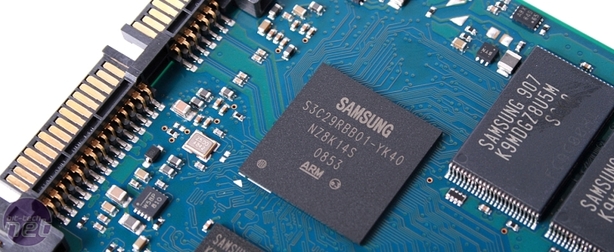
Solving The TRIM Problem, Without TRIM?
To date we’ve seen numerous attempts by SSD manufacturers to remedy performance degradation issues with varying degrees of success; drives using Samsung controllers such as the Corsair P-series or OCZ Summit Series have shipped with their own version of garbage collection for a few months now, where the algorithm moves files from cell to cell to maximise empty blocks and reduce lone file fragments. Indilinx Barefoot drives like the OCZ Vertex or Crucial M225 have take a different approach, opting for a wiper executable that performs a rudimentary version of TRIM, wiping junk data from cells for a palpable, but short term performance boost.The problem with these in-house performance maintenance systems though is they all rely on active behaviour: i.e. you. Wiper needed to be manually run regularly if you want to keep your drive in optimum condition, and Samsung’s garbage collection requires you to leave your system idle for an extended period while it sorts itself out – neither is ideal or even very user friendly. The competing performance maintenance methods don’t help consumers either, adding an unwanted and confusing element to a new product that is already extremely expensive.
Click to enlarge - Samsung's ARM drive controller offers Garbage collection, but it's no real substitute for trim
A quick browse through any SSD maker’s forums will reveal more than few confused and frustrated users who have run into problems and don’t understand why their £300 investment is performing so poorly – why doesn’t it just work? The beauty of TRIM is that it’s designed to run in the background while you’re using Windows normally, giving you an SSD that’s always up to scratch without the headaches.
One downside though, is that RAID arrays are not supported by TRIM at this time, so those picking up cheap, small SSDs for RAID-0 performance will be left cold, and could suffer a worse performance in the long term than their non-RAIDed friends.
With all three major drive controllers currently in the SSD consumer market having laid their hands on the TRIM table then, we thought it was high time we re-accessed the SSD landscape since our first looks at these drive controllers, back in May 2009 for the Indilinx and as long ago as December 2008 for the first gen of Intel’s X25-M! Of course there have been more updates than just the integration of TRIM, with Intel’s drives having switched to 34nm NAND flash and the Vertex undergoing at least half a dozen firmware updates.
Above all, we’re desperate to see just what kind of difference TRIM can make to an SSD’s performance after extremely heavy use. Is TRIM really the silver bullet with which SSDs can finally become a consistent performing and genuinely user friendly upgrade?

MSI MPG Velox 100R Chassis Review
October 14 2021 | 15:04









Want to comment? Please log in.